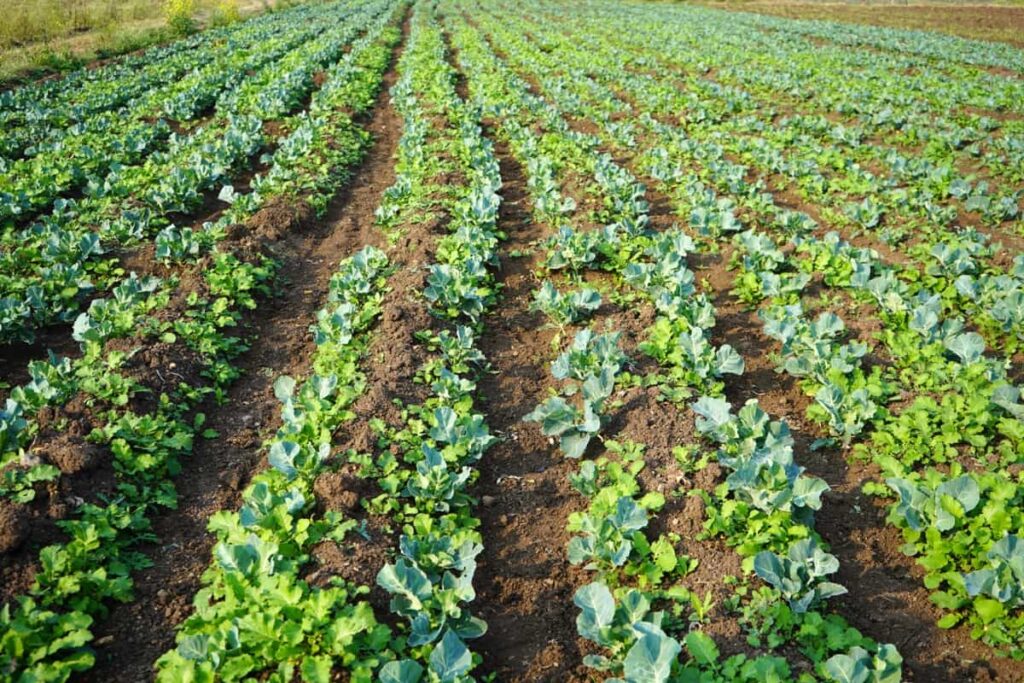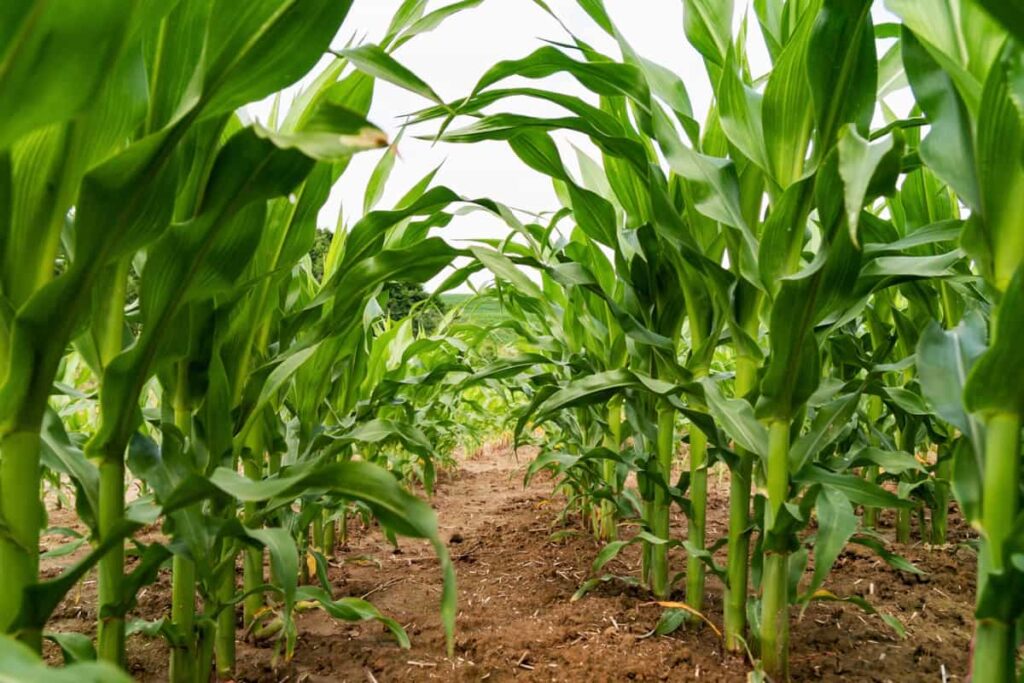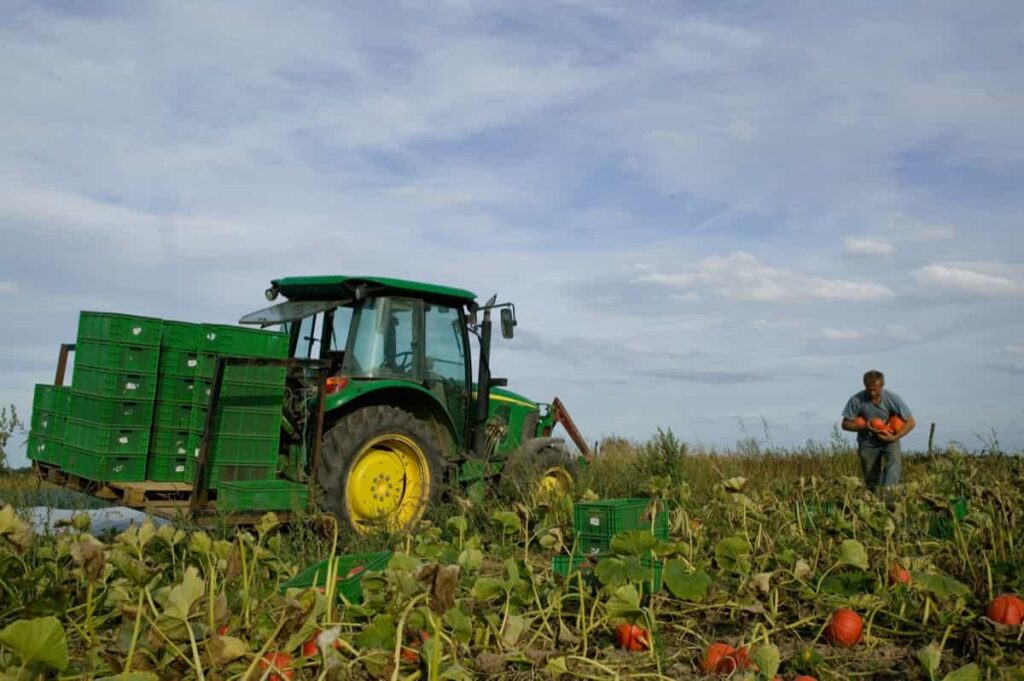If you want to grow your food or support sustainable agriculture, you may have heard of natural and organic farming. These two farming methods aim to produce healthy and nutritious food without harming the environment or animals. But what are the key differences between them? Which one is better for you and the planet?

In this blog post, we will explain what natural Farming and Organic Farming are, how they differ in terms of soil health and fertility, crop selection and rotation, pest and disease management, water conservation, biodiversity, and ecosystem services, animal welfare, food quality, and nutrition, cost and accessibility, scalability and sustainability, and regulations and certification. We will also provide tips on choosing the best farming method for your needs and goals.
Key Differences Between Natural Farming and Organic Farming
Introduction to Natural Farming and Organic Farming
Natural and organic farming are two methods of sustainable agriculture that aim to produce healthy food without harming the environment. Both methods avoid using synthetic chemicals, such as pesticides, herbicides, and fertilizers and rely on natural processes and inputs to enhance soil health and fertility, crop growth and quality, pest and disease resistance, water conservation, biodiversity, and animal welfare. However, natural Farming and Organic Farming are different.
Natural Farming vs Organic Farming: Understanding the Differences
Principles and Practices
- Natural Farming: This approach abstains from using any external fertilizers, whether chemical or organic. It relies on the natural breakdown of organic matter by microbes and earthworms directly on the soil surface. This process gradually enriches the soil with nutrients over time.
- Organic Farming: In contrast, organic farming utilizes organic fertilizers and manures, such as compost, vermicompost, and cow dung, which are added to the soil from external sources. Organic farming involves traditional practices like plowing, tilling, and weeding.
Soil Interaction and Cultivation Methods
- No Plowing in Natural Farming: Natural Farming avoids plowing or tilling the soil, maintaining its natural structure and integrity, much like in natural ecosystems. This approach is exemplified by the Zero Budget Natural Farming (ZBNF) model in India, pioneered by Padma Shri Subhash Palekar.
- Conventional Practices in Organic Farming: Organic Farming, on the other hand, still incorporates basic agricultural practices, including soil plowing and mixing manures.
In case you missed it: The Art of Heirloom Tomato Farming: Growing Rare and Delicious Varieties

Economic and Ecological Impact
- Cost-Effectiveness of Natural Farming: Natural Farming is considered more economical due to the absence of costs associated with bulk manures. It integrates seamlessly with local biodiversity, reducing ecological impact.
- Organic Farming’s External Inputs: Although organic farming is more expensive than natural farming, it still offers ecological benefits compared to conventional agriculture due to the need for bulk manures.
Natural Farming Benefits
- Enhances soil and environmental quality.
- Smaller carbon footprint.
- Conserves and builds soil health.
- Supports natural ecosystems, leading to cleaner water and air, free from toxic residues.
Organic Farming Benefits
- Reduces soil pesticide and chemical residues.
- Efficient resource use.
- Minimizes external farming costs.
- Yields produce with higher nutritional value and better taste.
- Promotes healthier animal husbandry practices.
- Protects natural flora, fauna, and habitats.
- Treats soil and environment as a public good.
Soil Health and Fertility
- Natural Farming: Emphasizes enhancing soil fertility naturally through the decomposition of organic matter on the soil surface by microbes and earthworms. It avoids any soil disturbance.
- Organic Farming: Improves soil health using organic manures and composts. It involves traditional soil cultivation practices like plowing and tilling.
Crop Selection and Rotation
- Natural Farming: Focuses on local and indigenous crop varieties. Crop rotation may be less structured, aligning more closely with natural growth patterns.
- Organic Farming: Encourages diverse crop rotation to maintain soil health. It often includes a wider variety of crops, including non-native species, provided they are grown organically.
Pest and Disease Management
- Natural Farming: Relies on the natural ecosystem for pest control, avoiding external interventions.
- Organic Farming: Uses organic pesticides and integrated pest management techniques. More proactive in pest and disease control compared to natural farming.
Water Conservation
- Natural Farming: Highly efficient in water use due to minimal soil disturbance, which helps retain soil moisture.
- Organic Farming Also focuses on water conservation but may require more water than natural farming due to incorporating irrigation systems in some practices.
Biodiversity and Ecosystem Services
- Natural Farming: Promotes biodiversity by mimicking natural ecosystems and using indigenous plant varieties.
- Organic Farming: Supports biodiversity through organic practices and avoiding synthetic chemicals, though it may not be as integrated with local ecosystems as natural farming.
Animal Welfare
- Natural Farming: Not explicitly focused on animal welfare but promotes coexistence with local wildlife.
- Organic Farming: Includes specific standards for animal welfare, ensuring animals are raised in more natural and humane conditions.
In case you missed it: Management Strategies for Controlling Black Thrips Life Cycle

Food Quality and Nutrition
- Natural Farming: Claims to produce nutritionally rich food due to the natural growth environment and minimal human intervention.
- Organic Farming: Known for high-quality, nutritious produce with strict guidelines to ensure the absence of synthetic chemicals.
Cost and Accessibility
- Natural Farming: Generally more cost-effective due to minimal input requirements. However, it may be less accessible due to a lack of mainstream adoption.
- Organic farming Can be more expensive due to organic inputs and certification costs. More accessible in the market compared to natural farming products.
Scalability and Sustainability
- Natural Farming: Highly sustainable and eco-friendly, but scalability may be challenging due to its reliance on natural ecosystems.
- Organic Farming: Sustainable and more scalable than natural farming, as it can be adapted to various scales of production.
Regulations and Certification
- Natural Farming: Lacks formal certification processes and is not regulated as stringently as organic farming.
- Organic Farming: Subject to strict regulations and certification processes to ensure compliance with organic standards.
Differences Between Natural Farming and Organic Farming: A Comparative Study
| Criteria | Natural Farming | Organic Farming |
| Soil Health and Fertility | Relies on natural processes like decomposition by microbes; avoids soil disturbance. | Uses organic manures and composts; involves traditional soil cultivation practices. |
| Crop Selection and Rotation | Focuses on local and indigenous crops; less structured rotation. | Diverse crop rotation including non-native species, provided they are grown organically. |
| Pest and Disease Management | Natural ecosystem-based pest control; minimal external intervention. | Uses organic pesticides and integrated pest management techniques. |
| Water Conservation | Highly efficient due to minimal soil disturbance, preserving soil moisture. | Focuses on water conservation; may use more water due to irrigation systems. |
| Biodiversity | Mimics natural ecosystems, promoting local biodiversity. | Supports biodiversity by avoiding synthetic chemicals, though may not be as integrated with local ecosystems. |
| Animal Welfare | Not a primary focus, but promotes coexistence with local wildlife. | Includes specific standards for humane animal treatment and natural living conditions. |
| Food Quality and Nutrition | Produces nutritionally rich food due to natural growth environments. | Known for high-quality, nutritious produce, with no synthetic chemicals used. |
| Cost and Accessibility | More cost-effective due to minimal inputs; less mainstream and thus less accessible. | More expensive due to organic inputs and certification costs; more accessible in markets. |
| Scalability and Sustainability | Highly sustainable; scalability can be challenging due to reliance on natural ecosystems. | Sustainable and adaptable to various scales of production, making it more scalable. |
| Regulations and Certification | Lacks formal certification and regulation compared to organic farming. | Subject to strict regulations and certification to ensure adherence to organic standards. |
In case you missed it: Crop Harvest Calendar for Maryland: Fruits and Vegetables Season by Month Chart

Conclusion
Natural and organic farming are both sustainable agricultural practices with distinct approaches. Natural Farming emphasizes minimal human intervention and ecosystem mimicry, while organic farming focuses on using organic inputs and adheres to specific standards. Both aim to enhance environmental sustainability but differ in methods, scalability, and regulatory frameworks.
- Profitable Village Farming Business Ideas in 2024
- High-Yield Aquaculture: Fast-Growing Fish for Farming
- Effective Fish Pond Construction Techniques for Beginners
- Irrigation and Water Management in Pineapple Farming
- Blossom to Harvest: Mastering Flowering and Pollination in Papaya Farming
- Pig Fattening Essentials: From Selection to Sale for Beginners
- Raising Wagyu Cattle: A Complete Guide for Premium Beef Production
- Soil Types and Their Water Holding Capacity
- Optimizing Irrigation Schedules for Coconut Groves for Enhanced Yield
